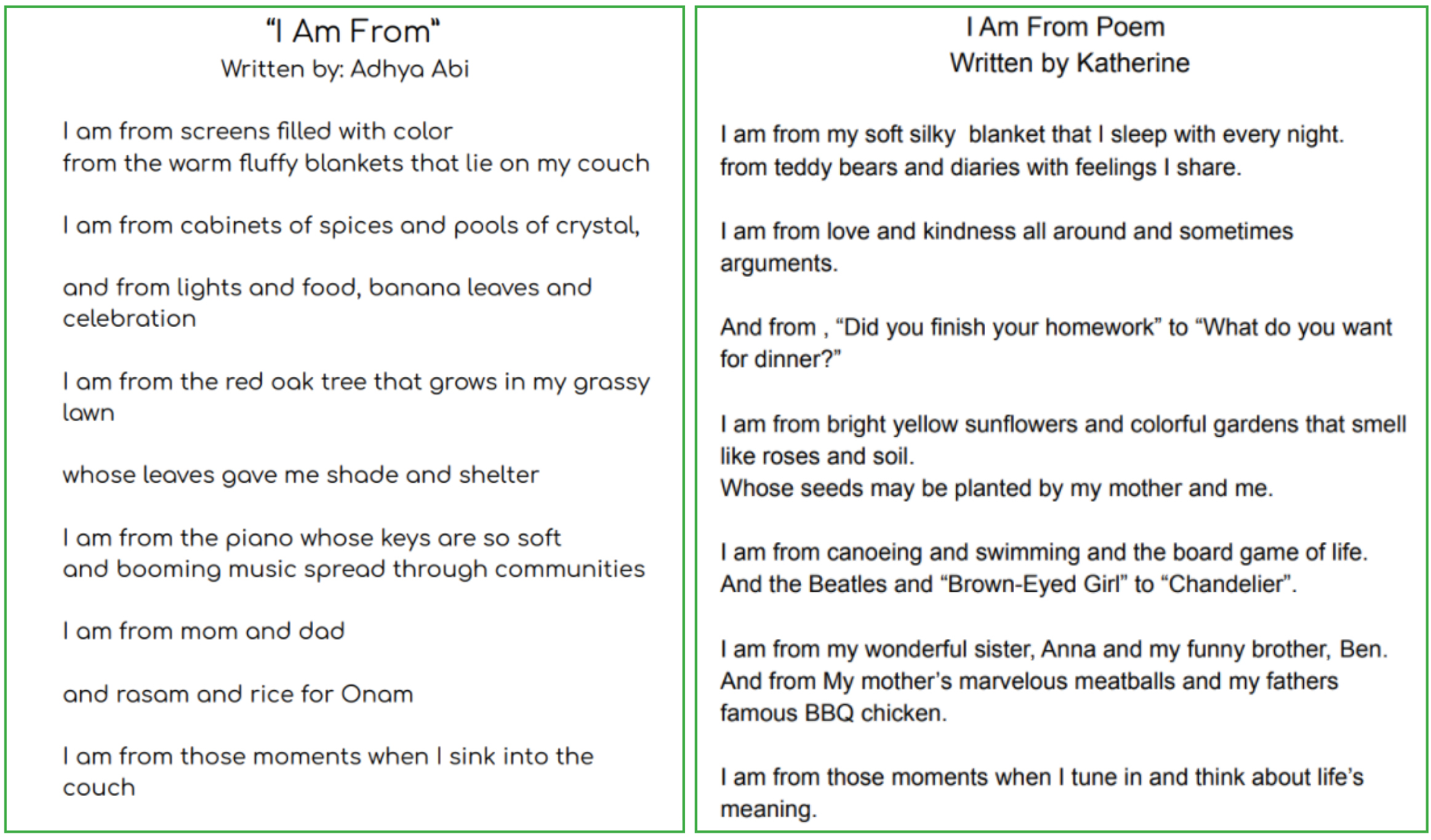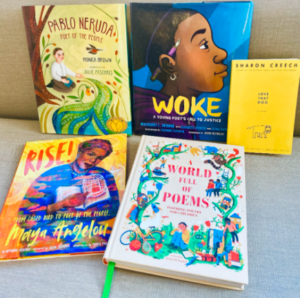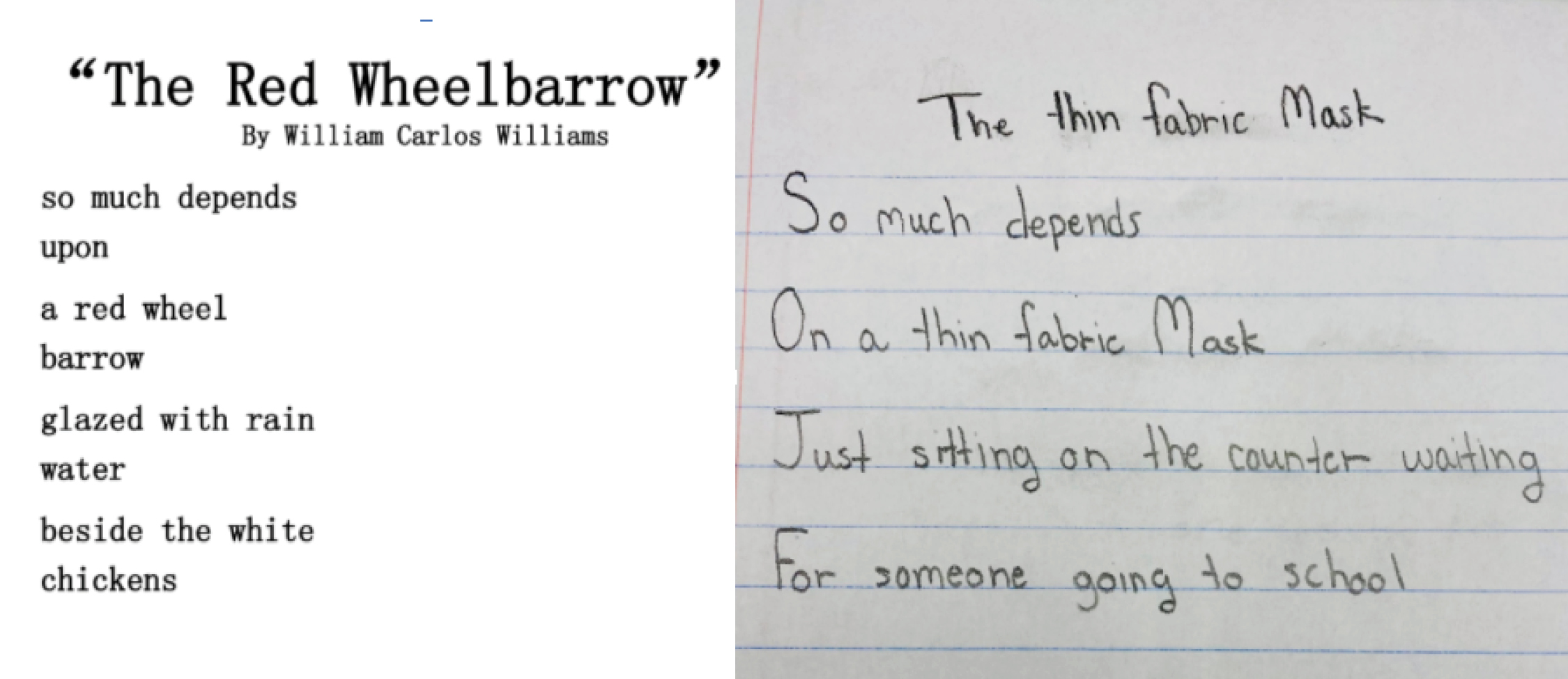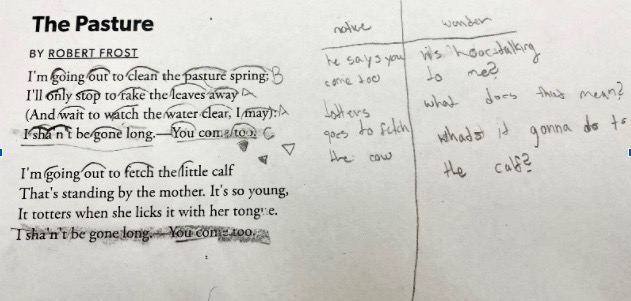
“While we might feel small, separate, and all alone, our people have never been more tightly tethered. The question’s not if we will weather this unknown, but how we will weather the unknown together.”
– Amanda Gorman
 In Upper Elementary, students across the program are engaging with poetry on multiple levels, including through narrative writing. 4th graders have studied a poetry novel entitled Love That Dog, as well as other works by famous poets. All of the students watched Amanda Gorman’s performance during the Inauguration. A priority in the classroom is to always have multiple works of inspirational poetry readily accessible and visible in our library.
In Upper Elementary, students across the program are engaging with poetry on multiple levels, including through narrative writing. 4th graders have studied a poetry novel entitled Love That Dog, as well as other works by famous poets. All of the students watched Amanda Gorman’s performance during the Inauguration. A priority in the classroom is to always have multiple works of inspirational poetry readily accessible and visible in our library.When discussing his relationship with poetry, Nobel Prize winning poet, Pablo Neruda, reflected on his early attraction to the craft at age ten saying, “It was at that age that poetry came in search of me.” As elementary and adolescent educators in a time of a pandemic – intertwined with political and social unrest, climate change, and information overload – we are acutely aware of the need for our students to have outlets to process and engage with the changes happening in their lives both internally and externally. Poetry, in undeniable ways, meets the moment.
Poetry, with its suggestive, unregulated, and unpredictable structures, can act as a magnetic connector between identity formation and worldmaking practices. Similar to music, poetry has the ability to subconsciously stimulate the areas of the brain related to introspection, specifically in the posterior cingulate cortex and medial temporal lobes, in what can be considered a “reconciliation of science and art” (“Poetry Is Like Music,” 2013). Particularly when we look at students in their formative years, as they make the existential shift to abstractive and critical understandings, poetry has the permissive power to grant ownership over the processes of seeking, self-expression, and meaning-making. Indeed, Gillaume Thierry, a psychologist at the University of Bangor, who conducted a study on the relationship between poetry and the brain, ultimately noted, “Poetry represents an ancient, cross-cultural, and emotionally powerful variety within the human communicative and expressive repertoire” (Vaughan-Evans et al., 2016). As such, poetry allows our children to not only connect but also feel connected to.
According to Facing History and Ourselves, a nonprofit organization devoted to curating educational resources that combat the historical whitewashing of prejudice and systemic racism, “Poetry can help students explore and connect with issues of identity, group membership, and belonging, as well as provide models and inspiration for how they might tell their own stories” (“Use Poetry To Teach About Identity,” n.d.) This sense of ownership, expressive permission granted within the very nature and inclusive style of poetry, is a pivotal awareness – a roadmap for an emerging adult navigating a world with many expectations and no clear directions. To teach poetry to our children is our responsibility as educators of literacy, and also our privilege as observers of their coming of age. *
 4th graders studied a poem by William Carlos Williams and wrote their own “ordinary object” poems.
4th graders studied a poem by William Carlos Williams and wrote their own “ordinary object” poems.
 Students are learning how to “Notice and Wonder” as a metacognitive strategy
Students are learning how to “Notice and Wonder” as a metacognitive strategy

Students use storyboards as a way to visually access the crucial imagery and sequencing of poems.
*References:
- Pelley, V. (2021, March 01). ‘Tell your story’: The power of poetry to help kids cope.
- University of Exeter. (2013, October 9). Poetry is like music to the mind, functional magnetic resonance imaging reveals. ScienceDaily.
- Use poetry to teach about identity. (n.d.). Retrieved March 09, 2021, from https://www.facinghistory.org/educator-resources/current-events/use-poetry-teach-about-identity
- Vaughan-Evans A, Trefor R, Jones L, Lynch P, Jones MW and Thierry G (2016) Implicit Detection of Poetic Harmony by the Naïve Brain. Front. Psychol. 7:1859. doi: 10.3389/fpsyg.2016.01859